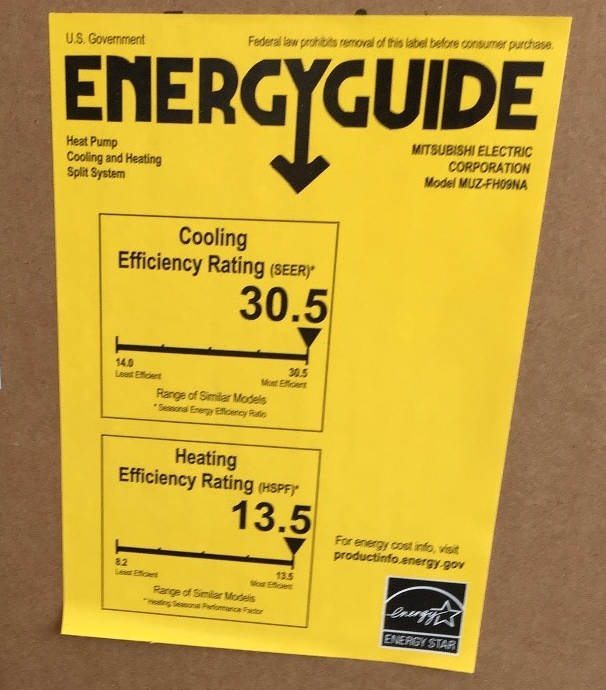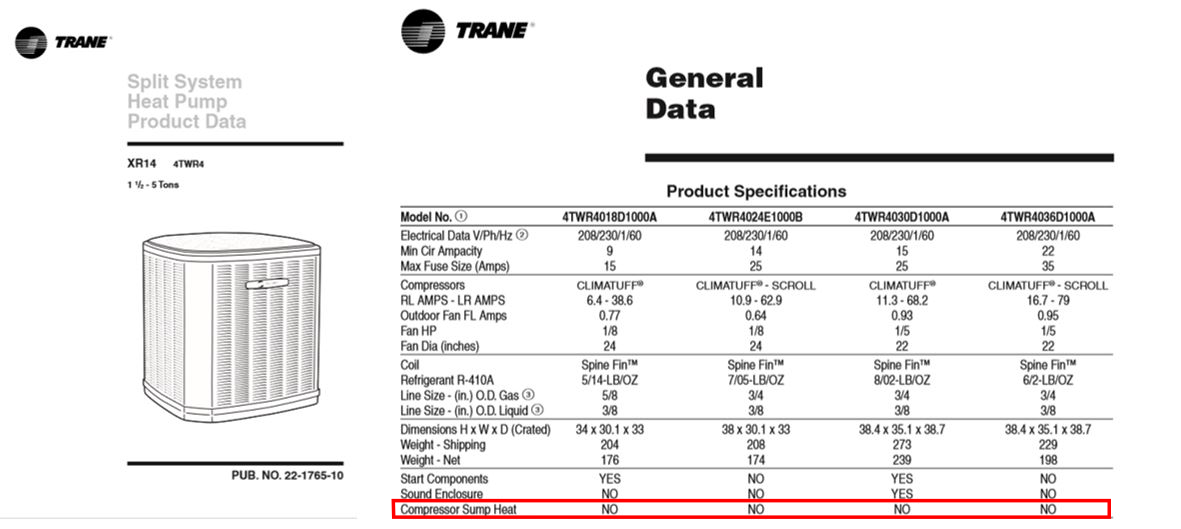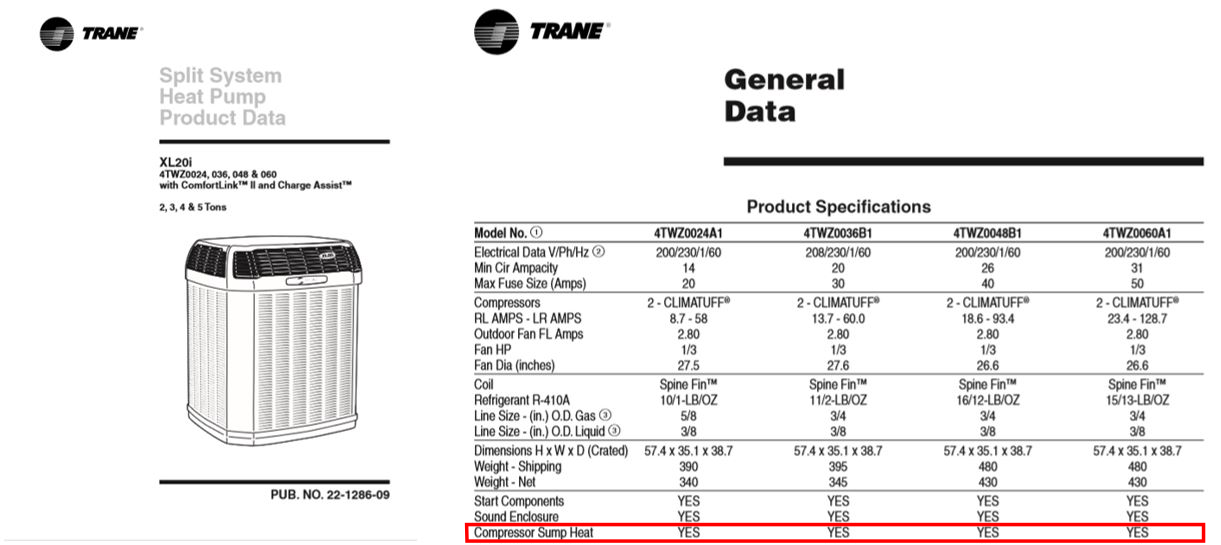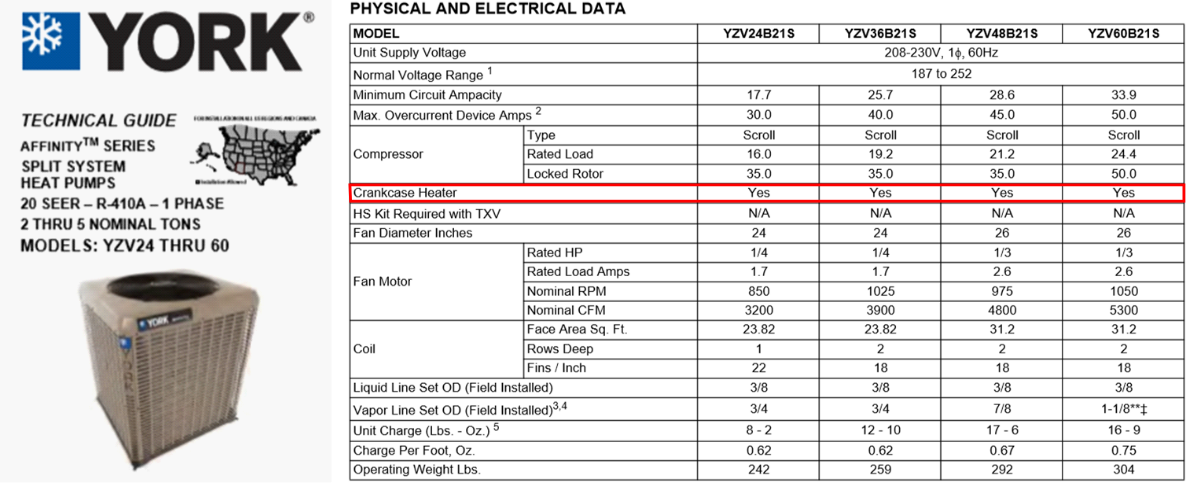Air conditioners and heat pumps often have “crankcase heaters” (also called “sump heaters”). Their purpose in life is to protect the compressor from refrigerant “migration” during off-cycle conditions when the compressor becomes cooler than other components in the system, causing refrigerant to condense in the compressor. Refrigerant can also migrate to the compressor when it isn’t cooler than other components because oil in a compressor sump absorbs refrigerant. Gravitational drainback of refrigerant to a compressor is another way for liquid refrigerant to fill an oil sump. Liquid refrigerant damages compressors directly, breaking pistons and valves. Excess refrigerant in a compressor’s oil sump also lowers lubricant viscosity, causing “scuffing” between sliding surfaces in the compressor.
Ironically, crankcase heaters are notorious for failing. Heat pumps can be designed to be tolerant of refrigerant migration, eliminating the need for crankcase heaters, so why aren’t they? Heat pumps with sump heaters are vestiges of older designs or old designers. Modern heat pumps should take advantage of refrigerant tolerant compressor technologies (eg, scroll compressors), compressor speed (inverter drive) control, digital refrigerant controls, and smaller heat exchanger tubing (eg, aluminum microchannels and 5mm diameter tubing). Many of these new technologies reduce unit cost and improve system efficiency, as seen in today’s very high efficiency mini-split heat pumps.
Crankcase heater energy is not included in yellow tag efficiency labels (see Figure 1). With a crankcase heater, the HSPF (Heating Seasonal Performance Factor) is actually 0 on days without heat pump operation! Today’s high performance homes are more susceptible to crankcase heater standby energy losses because heat is not needed until outdoor temperatures drop below 40 to 50F. Some sump heaters have temperature controls that activate the heater when outdoor temperatures are between 60 to 70F, while some heaters are always active whenever the compressor is inactive.
Residential heat pump crankcase heaters range from 40 to 70W of power. The amount of active heater time will vary depending on climate and home heating needs. For a high performance house that does not need significant heat until outdoor temperatures drop below 40F, as much as 2400 annual hours are at temperatures in the 40 to 65F range in northern tier climates while 700 to 1000 hours occur in milder, southern climates. A 70W heater active for 2000 hours per year would use 140kW-hours of electricity, or about $17, which is about half the energy used by a refrigerator and is sufficient for driving an electric vehicle 500 miles. An idle heat pump could potential use 4 times this energy per year (8000 hours).
Identifying heat pump units with crankcase heaters is not straightforward. Product brochures do not have heater details, however the Technical guide specifications typically do contain sump heater information. Figure 2 displays a component specification table from the Trane XR14 economy heat pump guide that showing none of the XR14 models have crankcase heaters.
Figure 3 shows a similar technical specification guide for Trane’s high end XL20i series heat pumps, which conversely all contain crankcase heaters. Interestingly, Trane’s high end heat pumps are all inverter-drive, scroll compressors which tend to tolerate refrigerant migration.
We don’t want you to think we are picking on one company. Trane manufactures high quality equipment and is a leader in technology development. We can show the same with many other heat pump manufacturers. York, another manufacturer of high quality HVACR equipment, has similar product offerings and further demonstrates the confusing nature of crankcase heaters.
Figure 4 is the technical specification guide for York’s economy LX heat pump series. The specification guide table lists crankcase heaters for intermediate capacity heat pumps with “reciprocating” (piston) compressor, but no heaters for the 1 ½ ton (18,000Btu/h) and 5 ton (60,000Btu/h) scroll compressor models.
Figure 5 shows the technical specification for York’s premium Affinity heat pumps, listing crankcase heaters for all models even though all units use scroll compressors. It’s confusing!
The bottom line is to be aware of crankcase heaters, and that you can find models at all capacities that do not use crankcase heaters. Perhaps 140kW-hours per year of unneeded energy use doesn’t sound that bad, but over a heat pump’s lifetime, this energy might have provided 10,000 miles of EV driving.





 Figure 1: Energy guide labeling does not include the impact of crankcase heater energy.
Figure 1: Energy guide labeling does not include the impact of crankcase heater energy. Figure 2 - click to enlarge
Figure 2 - click to enlarge Figure 3 - click to enlarge
Figure 3 - click to enlarge Figure 4 - click to enlarge
Figure 4 - click to enlarge Figure 5 - click to enlarge
Figure 5 - click to enlarge

















